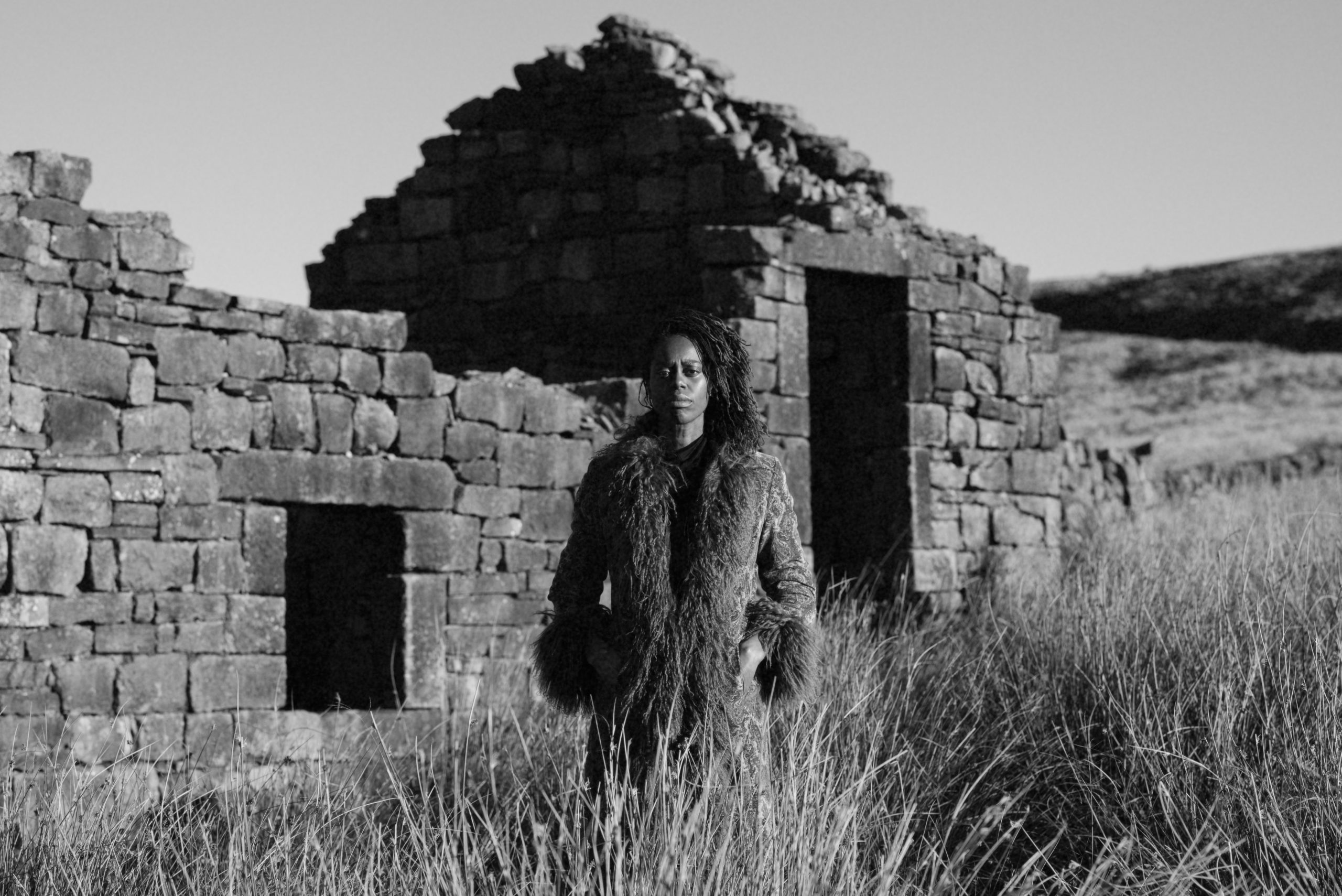Words by Francesca Matthys.
Temitope Ajose bursts in to The Place’s bar foyer unexpectedly embodying what we have all come to see. Lady Macbeth, a character plagued by her own demise. In this first encounter Ajose breaks all conventional expectations of what space and proximity mean to an audience; drawing the audience directly into the intimate world of the character/performer.
This world is surreal and though we are present, she is alone with her thoughts. With the reality of her existence. We are witness to her anguish and pleasure, anger and uncertainty. Guilt and play.
As the song ‘Sweet Dreams’ by Eurythmics blares from the theatre space; Ajose leads us from the bar foyer area into what we soon discover as her quarters, romantically curated, dim lights, luscious plants, an antique couch that one may imagine Marie Antoinette to have, a clothes rack with an array of garments and a sound desk with live musician Adam Liston amongst other things. Creating the illusion that Lady M aka Ajose has made herself comfortable here, the seating is all brought onstage in this space and we are here on her terms.
Ajose does not hide anything in this work, adorning herself with costume, jewellery and even perfume, asking audience members to spritz her neck and wrists. Lady M is at home with us and we with her. As she revels in the gift of time, we feel safe. As she seductively moves her hips side to side I wonder about how this part of the body represents security and self confidence; commenting on the wavering state of Lady M as portrayed by Ajose.
We are privy to her internal struggle. As Lady M obsesses ‘Out damned spot…’ residue that cannot come out, the stage breathtakingly turns to night and both the audience and Ajose are caught in dread. Guilt creeps up on us once more through its embodiment of sound. Knocking penetrates through the ceiling, almost. Grief is what blocks the heart chakra in the chest as viewed by yogic philosophy and Ajose demonstrates this through a repetitive ‘Holding together’ movement at her heart centre.
As the stage begins to brighten we are reminded that lighting is cleverly used to represent Lady M’s internal state. Other strategies like audience interaction through communal drinking of wine, sharing of food and games are also used to further immerse us in the internal landscape of the character and performer. We are too asked to bare our soul and be vulnerable through a series of intimate questions around security and sexuality that if answered yes, one should step forward.
Through this densely yet beautifully weaved performance Ajose morphs between the hyper and vast expressions of gender moving from a slinky black dress to a shirt, tie and trousers. Perhaps sharing with us another facet that Ajose must tirelessly embody. She repeatedly performs a very lyrical piece of choreography, looping her movement and her state of mind. Replaying to understand or come to terms with.
In between Ajose’s persona shifts and transitions there are sensitive and clearly crafted moments of pauses almost as if the penny has dropped for her, moments of realisation for how time has passed, for where she is now. This allows us as the audience to reflect on how far we have journeyed. For this and many other reasons, Ajose offers us not only a performance but a reflective tool in action.
I am fascinated by the rhythm of emotions or states that Ajose explores in the body, beginning with guilt and developing to anguish and exhaustion that allow the exploration of real life experiences to transcend towards artistry.
The audience again is complicit when Lady M decides how to hypothetically harm the sound technician. He has been silently present up until now, shifting the mood and moving microphones. As the audience must decide his fate I wonder what it means today for the audience to witness a white man’s future lie in the hands of a powerful black woman.
The final image that Ajose leaves us with is blood. That of which she has been running away from, the reality the stain transformed into possibility. Again she invites the audience in and asks for our wishes, speaking them into existence. It is not the first work that I have recently watched that has left the audience with a ritual. I often think of the responsibility for the artist to the audience and this form of farewell feels really mindful and hopeful.
Lady M (At Home with Lady Macbeth) is a romantic dreamlike mirage of experience that contrasts with repetitive movement language that is indicative of the tribulations of life on earth.
